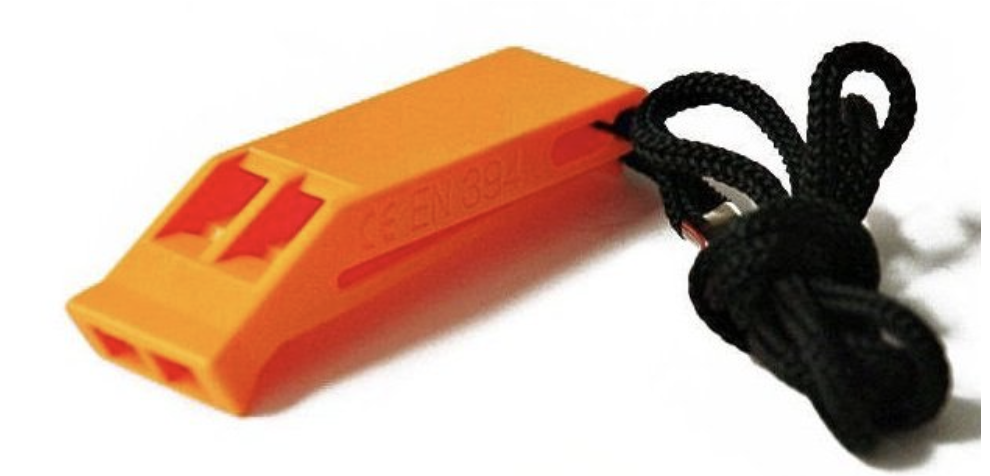DIY Emergency Kit: What to Include and Why
Create your own emergency kit—compact and easy to carry.
Follow Wildhood's practical advice to always be equipped and ready to face even the most critical situations.
After conducting some research, we realized that finding a valid and complete survival kit on the market is nearly impossible. That's why we've put together a list of essential items to include in your kit, incorporating the principles of the "5 Cs of Survival"—plus a little extra.
1. Fixed-Blade Knife
A fixed-blade knife has a solid core that extends through the handle, rather than stopping at the base. This feature makes it much more durable and reliable compared to a traditional folding knife
2. Emergency Blanket
Even if the weather is mild and promises to stay good, always carry an emergency blanket, also known as a space blanket.
Its incredible compactness and light weight make it almost unnoticeable in your pack, but its life-saving potential is immense.
In cases of extreme heat exposure, the emergency blanket should be used with the silver side facing outward. This way, it reflects heat away, keeping your body temperature cooler.
To maximize protection against the cold, use the blanket with the gold side facing outward.
The blanket can also be used to collect water or to create an improvised shelter if needed.
3. Headlamp
Essential for providing light in your surroundings and for signaling in nighttime rescue situations.
In an emergency, conserve your headlamp’s battery as much as possible to ensure it remains charged when you truly need it.
4. Fire Starter (Ferro Rod)
A ferrocerium rod is the most reliable tool for fire starting in all weather conditions.
A lighter is much simpler and more convenient to use, but if it gets wet, it may not function.
5. Tinder
Always carry tinder in your kit to start a fire in case of an emergency. Keep it sealed in a waterproof bag to ensure it stays dry, even in humid conditions.
Here are some examples of quick-ignition tinder:
Birch bark
Cotton pads
Twine (frayed for easier ignition)
6. Whistle
A whistle is essential for continuous and long-lasting auditory signaling without straining your voice.
In emergencies, always keep it within reach, ideally attached to a lanyard to prevent loss.
Although most modern trekking backpacks include a built-in whistle as standard equipment, always check to make sure you have one with you.
7. First Aid Kit
We recommend purchasing a standard medical kit available on the market to have a properly designated case that is clearly identifiable.
Below is a list of essential items for a well-equipped first aid kit:
Sterile gauze
Cohesive bandage
Disinfectant wipes
Electrolyte powder and a packet of sugar
Tweezers (for removing ticks)
Simple needle (for removing thorns)
Adhesive bandages
Blister plasters
Steri-Strips
Emergency blanket
Trauma shears
Digital thermometer
Latex gloves
Tourniquet (for arterial bleeding in limbs, to be applied upstream of the wound—useful when a regular bandage is insufficient for severe bleeding)
Antipyretic (e.g., paracetamol)
Anti-inflammatory (e.g., ibuprofen)
Anti-diarrheal (e.g., loperamide)
Specific medication for known allergies (e.g., corticosteroids)
Always keep the first aid kit within easy reach, in an easily accessible pocket of your backpack.
8. Rope
Making rope from natural materials is labor-intensive. In an extreme situation, crafting a few centimeters is feasible, but making several meters would take a long time.
A 20-meter length of 4mm rope weighs about 150 grams and can make a significant difference.
(Do not use it for rappelling unless you are certain of its weight-bearing capacity.)
9. Compass
A compass is a fundamental piece of an explorer’s equipment and should always be used alongside a map of the area.
If you ever get lost, it is an essential tool for finding your way back and getting out of an emergency situation on your own.
10. Container
A container serves not only to hold survival kit items but also as a water collector and boiling vessel.
The ideal container has:
A wide opening
A tight-sealing lid
An insulated handle to prevent burns during use
What Else Could I Add to My Kit?
Below are some additional items that, if available, could make survival situations easier:
Tarp: A waterproof sheet with grommets that allows you to build a shelter quickly. Unlike an emergency blanket, it is specifically designed for this purpose.
Candle: Useful for igniting difficult fires, providing light, sealing materials, and waterproofing. It can be shielded from wind using aluminum foil, a broken bottle, or a tin can.
Condom: Takes up minimal space and weighs almost nothing. It can be used as an emergency water container.
Poncho: A large rain cover that takes up little space and can help keep you dry while setting up a survival shelter.
Glow Stick (Starlight): A lightweight, waterproof, instant-activation light source that provides long-lasting illumination.
Would you add anything else to your emergency kit? Let us know in the comments!
Did you find this article interesting?
Join us in the largest wild camping community! 🏕️
Download the app to connect with passionate campers like you and share the perfect spots to pitch your tent
Follow us Instagram to learn while having fun and share your adventures.
Visit our website to discover the engaging activities of our community.
Sign up to the Wild-letter to follow the next exciting stories
Stay updated on the world of wild camping by following us on Facebook.
Live your outdoor adventure with Wildhood! 🌄











